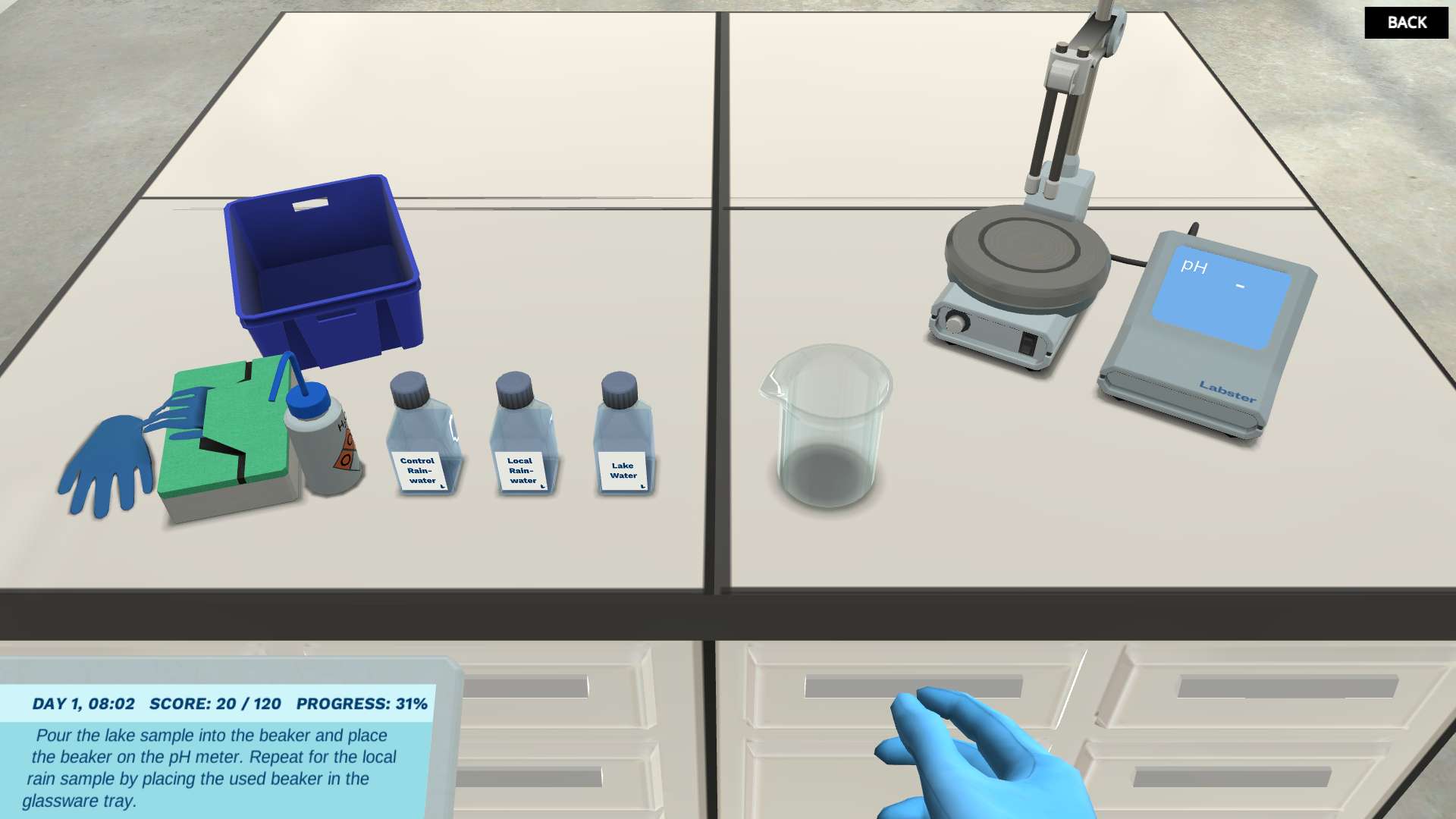Heading 1
Heading 2
Heading 3
Heading 4
Heading 5
Heading 6
Lorem ipsum dolor sit amet, consectetur adipiscing elit, sed do eiusmod tempor incididunt ut labore et dolore magna aliqua. Ut enim ad minim veniam, quis nostrud exercitation ullamco laboris nisi ut aliquip ex ea commodo consequat. Duis aute irure dolor in reprehenderit in voluptate velit esse cillum dolore eu fugiat nulla pariatur.
Block quote
Ordered list
- Item 1
- Item 2
- Item 3
Unordered list
- Item A
- Item B
- Item C
Bold text
Emphasis
Superscript
Subscript
About This Simulation
Join us in in the exploration of acids and bases and learn all the advanced terms used in chemistry.
Learning Objectives
- Calculate the pH of weak acids and bases
- Illustrate the reactions of weak acids and bases
- Categorize acids and bases based on their strength
- Prepare various types of salts through neutralization
- Review the concept of the acid dissociation constant (Ka) and its logarithmic form (pKa)
About This Simulation
Lab Techniques
- pH measurement
Related Standards
- HS-PS1-2, HS-PS1-5
- 8.3 Weak Acid and Base Equilibria
- 8.4 Acid-Base Reactions and Buffers
- 8.7 pH and pKa
- 8.4 Strong and weak acids and bases
Learn More About This Simulation
The concept of strong acids may sound frightening, but did you know that some weak acids can actually be more dangerous than their stronger counterparts? In the Advanced Acids and Bases simulation, you will learn all about the characteristics of weak and strong acids and bases, which will not only help you get a better understanding of chemistry, but also let you help out the lake ranger, Victoria, in the process.
Calculating pH
Victoria is bewildered by the condition of the lake she is monitoring, as all the animals living in the lake have suddenly disappeared. Your first mission in the Advanced Acids and Bases lab is therefore to take water samples of the lake and analyze their pH in the lab. The goal is to try to identify connections between the measured pH and the lake conditions.
Illustrating weak acids and bases
You’ll soon discover that the water samples have different pH levels. Through two molecular animations, you will see how acids and bases get their ‘weak’ and ‘strong’ labels and learn how the acid dissociation constant (Ka) is used to define the strength of acids.
Mixing acids and bases
By applying the concept of neutralization, you can create different types of salt. This will come in handy for solving real-life issues, such as environmental hazards.
Will you be able to connect all the concepts you learned to help out Victoria and save her lake?
For Science Programs Providing a Learning Advantage
Boost STEM Pass Rates
Boost Learning with Fun
75% of students show high engagement and improved grades with Labster
Discover Simulations That Match Your Syllabus
Easily bolster your learning objectives with relevant, interactive content
Place Students in the Shoes of Real Scientists
Practice a lab procedure or visualize theory through narrative-driven scenarios


FAQs
Find answers to frequently asked questions.
Heading 1
Heading 2
Heading 3
Heading 4
Heading 5
Heading 6
Lorem ipsum dolor sit amet, consectetur adipiscing elit, sed do eiusmod tempor incididunt ut labore et dolore magna aliqua. Ut enim ad minim veniam, quis nostrud exercitation ullamco laboris nisi ut aliquip ex ea commodo consequat. Duis aute irure dolor in reprehenderit in voluptate velit esse cillum dolore eu fugiat nulla pariatur.
Block quote
Ordered list
- Item 1
- Item 2
- Item 3
Unordered list
- Item A
- Item B
- Item C
Bold text
Emphasis
Superscript
Subscript
A Labster virtual lab is an interactive, multimedia assignment that students access right from their computers. Many Labster virtual labs prepare students for success in college by introducing foundational knowledge using multimedia visualizations that make it easier to understand complex concepts. Other Labster virtual labs prepare learners for careers in STEM labs by giving them realistic practice on lab techniques and procedures.
Labster’s virtual lab simulations are created by scientists and designed to maximize engagement and interactivity. Unlike watching a video or reading a textbook, Labster virtual labs are interactive. To make progress, students must think critically and solve a real-world problem. We believe that learning by doing makes STEM stick.
Yes, Labster is compatible with all major LMS (Learning Management Systems) including Blackboard, Canvas, D2L, Moodle, and many others. Students can access Labster like any other assignment. If your institution does not choose an LMS integration, students will log into Labster’s Course Manager once they have an account created. Your institution will decide which is the best access method.
Labster is available for purchase by instructors, faculty, and administrators at education institutions. Purchasing our starter package, Labster Explorer, can be done using a credit card if you are located in the USA, Canada, or Mexico. If you are outside of North America or are choosing a higher plan, please speak with a Labster sales representative. Compare plans.
Labster supports a wide range of STEM courses at the high school, college, and university level across fields in biology, chemistry, physics, and health sciences. You can identify topics for your courses by searching our Content Catalog.















